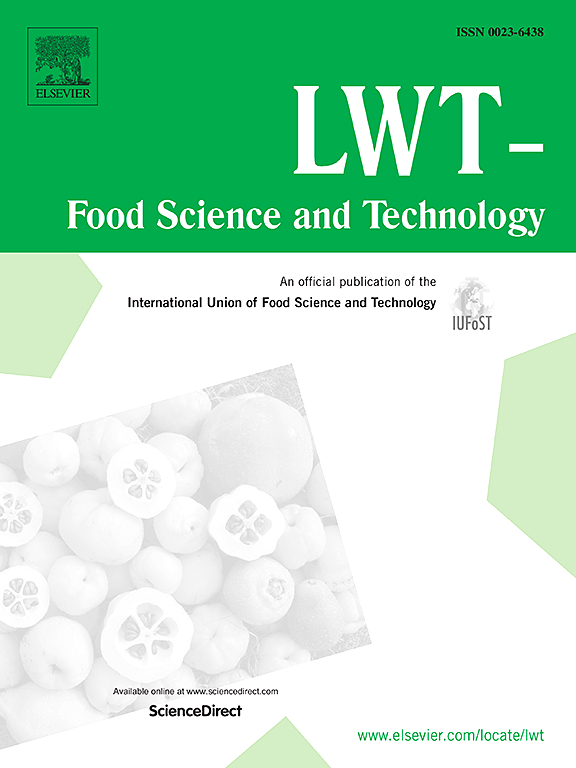Quantitative detection of hidden milk allergens in hypoallergenic formulas through bottom-up proteomics, high-resolution mass spectrometry and the mechanism of D-ribose in reducing the allergenicity in vitro
IF 6
1区 农林科学
Q1 FOOD SCIENCE & TECHNOLOGY
引用次数: 0
Abstract
Cow's milk protein allergy (CMPA) has become a common public health concern and hypoallergenic formula is considered as an alternative during infancy. However, whether there are traces of cow's milk allergen (CMA) in hypoallergenic formulas, remains unknown. In this study, a tailored method was developed for the simultaneous detection of 6 CMA (namely, α-lactalbumin, β-lactoglobulin, αS1-casein, αS2-casein, β-casein, and κ-casein) in hypoallergenic formulas using liquid chromatography-mass spectrometry. The protein of spiked hypoallergenic formula was extracted, digested and analyzed by Q-TOF mass spectrometry. Bioinformatical analysis using PEAKS software screened 15 peptides and 6 peptides were selected for quantitative analysis. Performances of the method were comparatively compared with those reported in literature and the VITAL. Screening for commercial hypoallergenic formula samples confirmed the existence of CMA in three pHF and two eHF (i.e., partially or extensively hydrolyzed formulas). Moreover, the glycation degree of CMA was found to be negatively correlated with the molecular sizes of the sugar. Subsequent photochemical, immunological, mass spectrometric analyses identified D-ribose as the most prominent sugar in reducing the allergenicity of CMA in vitro. This research thus provides a tool for monitoring traces of CMA in hypoallergenic formulas and a promising way of reducing the allergenicity through glycation.
求助全文
约1分钟内获得全文
求助全文
来源期刊

LWT - Food Science and Technology
工程技术-食品科技
CiteScore
11.80
自引率
6.70%
发文量
1724
审稿时长
65 days
期刊介绍:
LWT - Food Science and Technology is an international journal that publishes innovative papers in the fields of food chemistry, biochemistry, microbiology, technology and nutrition. The work described should be innovative either in the approach or in the methods used. The significance of the results either for the science community or for the food industry must also be specified. Contributions written in English are welcomed in the form of review articles, short reviews, research papers, and research notes. Papers featuring animal trials and cell cultures are outside the scope of the journal and will not be considered for publication.
 求助内容:
求助内容: 应助结果提醒方式:
应助结果提醒方式:


